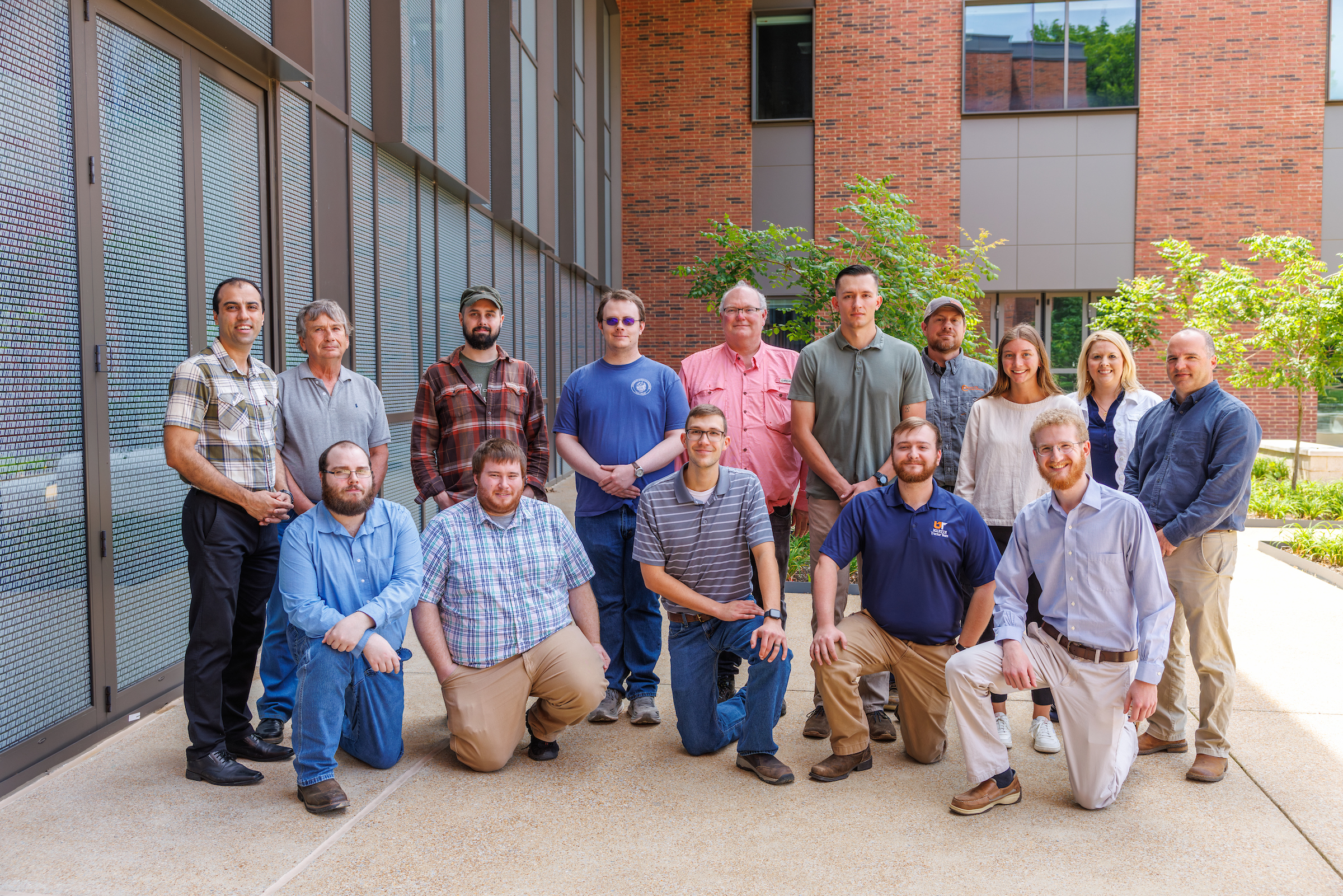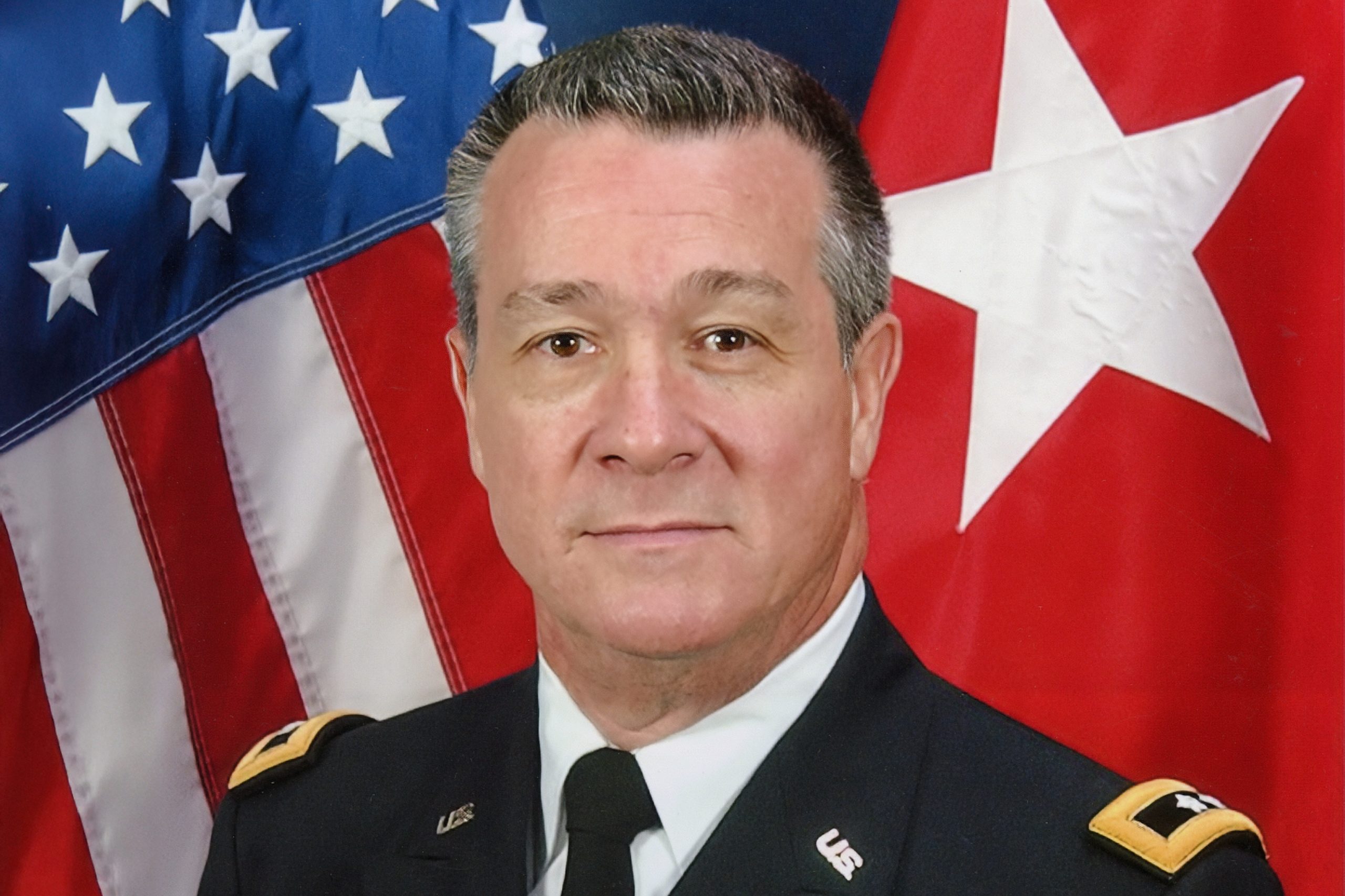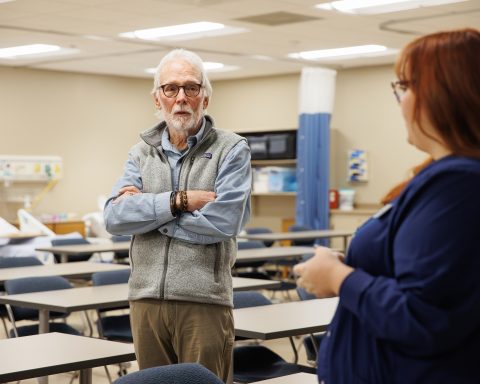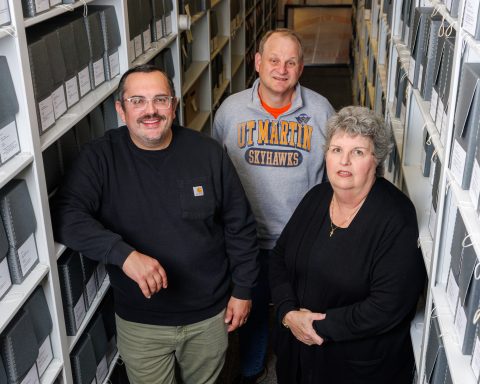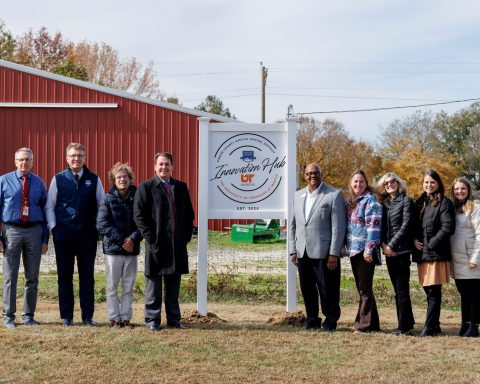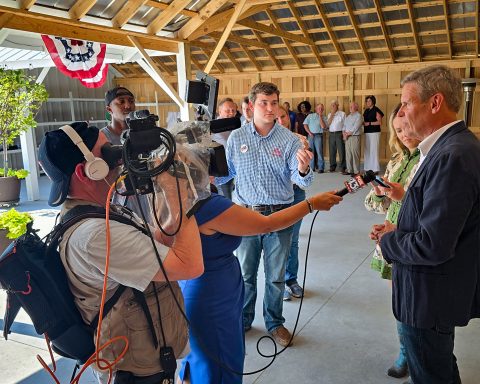The electrical and computer engineering senior design teams presented, defended and demonstrated their senior electrical and computer engineering projects May 1.
• Automatic checkerboard (Tony Anderson mentored by Lee Bennett): A smart checkerboard that allows players to play checkers against a computer, with the added feature of the board automatically moving the pieces when the computer makes a move.
• Next-generation Skyhawk tractor: Developing electronic steering, electric drivetrain, human machine interface (HMI) and engine integration (Brooke Kala, Nathan Robison and John Kerstiens): The goal of this senior design project was to advance the electrical components and technology of the Skyhawk tractor team’s 1/4-scale tractor (advised by Dr. Sandy Mehlhorn, associate professor of agricultural engineering).
Last year, the team made significant progress by implementing an electric driveline, which greatly improved its competitiveness. However, several areas still required enhancement, including the development of an electronic steering system, the addition of an HMI for operator data display, and the integration of a new electronically controlled competition engine.
• Traffic light control back-up power system lead (Jacob Schnepple mentored by Adam Griffin and Kyle Ross): The goal of this project is to design an affordable, efficient and user-friendly back-up power system for traffic light controllers, ensuring uninterrupted operation at traffic intersections.
The system will incorporate multiple free energy sources, such as solar and magnetic generation, to provide temporary power to critical control systems during outages.
• Neuroimaging-driven autonomous vehicles driving simulation in extended reality (Curt Lynch, Kyle Byassee, Isaac Copeland, Seth Hatchett): This project focuses on studying the impact of autonomous vehicles on drivers, particularly how drivers interact with self-driving systems in high-stress scenarios.
Traditional methods of assessing driver stress, like surveys, can be limited by their reliance on qualitative data and lack of controlled environments. In contrast, testing in virtually simulated environments provides a more controlled setting and allows for the collection of quantitative data from various sources, such as EEG, heart rate monitoring, and head/eye tracking.
PHOTO: Shown at the UTM senior engineering project demonstration May 1 are (kneeling, l-r) seniors Tony Anderson, Curt Lynch, Isaac Copeland, Nathan Robison and John Kerstiens; (standing, l-r) Dr. Saman Sargolzaei, associate professor of engineering; mentor Lee Bennett; seniors Kyle Byassee and Seth Hatchett; Jeff McCullough, associate professor of engineering; senior Jacob Schnepple; mentor Adam Griffin of Union City Energy Authority; senior Brooke Kala; Laura Suiter, director of Development and Planned Giving; and Kyle Ross of Union City Energy Authority.

